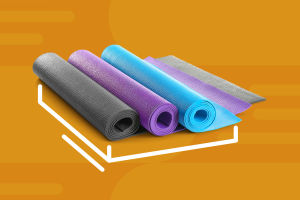Rubik's cube also called a magic cube, is also known as Rubik's cube.
The earliest Rubik's Cube was invented by a Hungarian professor named Rubik in 1974.
However, this professor did not invent it for production and entertainment; rather, as a professor of architecture, he wanted to create a teaching aid in order to help students understand the composition and structure of the space cube and to exercise their spatial thinking skills and memory.
Professor Rubik designed a cube-cutting experiment, which was the earliest prototype of the concept of Rubik's Cube. Based on this concept, he spent six weeks designing a 3*3*3 square cube structure that could be rotated up and down and crossed over. After making this teaching aid, Professor Rubik painted its six outer surfaces with six different colors, and the Rubik's Cube was born.
People play the Rubik's Cube, which is already a competitive sport. Naturally, it also has the benefits common to competitive sports.
Rubik's cube can cultivate people's ability to use their hands and brains, and greatly train people's memory, judgment, and spatial imagination.
Rubik's cube is a sport that can be played anytime and anywhere, with no special requirements for space and space, and no limitations on the number of people, making it more convenient than any other sport, in other words, it can fill all your empty time and bring joy to it.
The restoration process of the Rubik's Cube is a process of observation, action, and thinking in one, and the process of fast restoration, you must maintain a high degree of concentration, coordination of hand movements, and high speed of thinking.
It has the general characteristics of a competitive sport and has very high requirements for thinking skills. One of the most prominent is the blind screw recovery, that is, first remember the state of the cube, and then recover the cube while blindfolded. This is a great challenge to short-term memory.
Turning the Rubik's cube is mostly a finger movement, and this kind of movement at the end of the body has a positive effect on the internal circulation of the whole body, which is beneficial to health. The practice of the Rubik's Cube is a sharpening of will, and the transformation of the Rubik's Cube is a test of hands-on ability.
As mentioned earlier, the inventor of the Rubik's Cube was a university professor, and his first desire to invent the Cube was to help students understand the composition and structure of the space cube and to exercise their spatial thinking skills and memory. This already explains part of the function of the Rubik's Cube.
There are a thousand Hamlets in a thousand people's eyes, and students with different professional knowledge will be able to derive different insights from the Rubik's Cube, and through the Cube, they will also be able to develop a new understanding of their profession.
In addition to becoming a more popular sport, the study of the Rubik's Cube has also led to many scientific research fields. First of all, mathematicians were interested in it.
When the Rubik's Cube first became popular around the world, the most fascinating aspect of it was the problem of reduction, so mathematicians at the time were in the limelight.
They obtained various methods of Rubik's Cube restoration based on specialized mathematical theories and knowledge, such as group theory and linear algebra, with the help of electronic computers.
Nowadays, research and computer technology have improved, and the study of the Rubik's Cube has greatly surpassed the level of that time. It is now possible to use computers to calculate the simplest method of restoration for each state.


